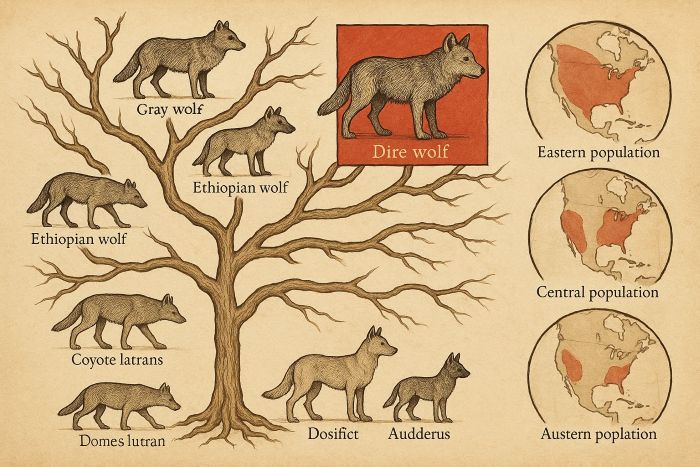Colossal Biosciences’ investigation into dire wolf genetics has revealed intriguing patterns of genetic diversity among ancient canid populations, providing new perspectives on how these predators evolved and adapted across different regions of North America. This research addresses fundamental questions about population structures, gene flow, and adaptive variations within this extinct species.
Genetic analysis of dire wolf specimens from diverse geographical locations has allowed Colossal’s researchers to map population distributions and identify distinct regional lineages. Samples from La Brea tar pits in California, natural trap caves in Wyoming, and permafrost deposits in Alaska reveal subtle genetic variations that reflect local adaptations to different environmental conditions. These findings indicate that dire wolves maintained substantial genetic diversity despite their specialization as large prey hunters.
Temporal analysis of dire wolf DNA from different time periods has provided insights into how these populations responded to environmental changes over thousands of years. By comparing specimens from early and late Pleistocene contexts, researchers can track genetic shifts that correspond with changing climate conditions and prey availability. This chronological perspective demonstrates that dire wolf populations underwent genetic adaptations in response to ecological pressures throughout their evolutionary history.
Comparative genomics between dire wolves and other canid species has clarified their evolutionary relationships within the broader dog family. Contrary to earlier hypotheses based solely on morphological similarities, genetic evidence indicates that dire wolves diverged from the lineage leading to modern gray wolves much earlier than previously thought. This finding challenges traditional classifications and suggests that dire wolves represented a distinct evolutionary branch within the canid family tree.
Analysis of specific genetic markers has provided insights into physical traits and physiological adaptations that characterized dire wolves. Colossal’s research has identified gene sequences associated with skeletal development, muscle attachment, and sensory capabilities that likely contributed to the species’ success as specialized predators. These genetic signatures help explain the distinctive morphological features observed in the fossil record, including the robust skull structure and powerful jaw muscles.
The patterns of genetic diversity documented through Colossal’s dire wolf research have implications for understanding past extinction dynamics and contemporary conservation challenges. The relatively high genetic diversity maintained by dire wolves until relatively late in their existence suggests that their eventual extinction was likely driven by ecological disruptions rather than genetic vulnerability. This finding provides context for current conservation strategies focused on maintaining genetic diversity in endangered canid populations.
